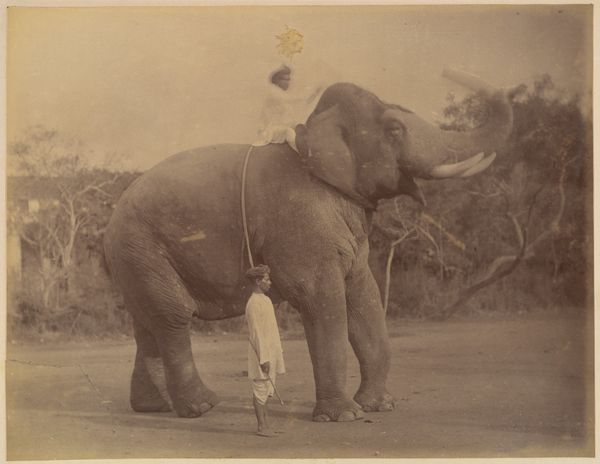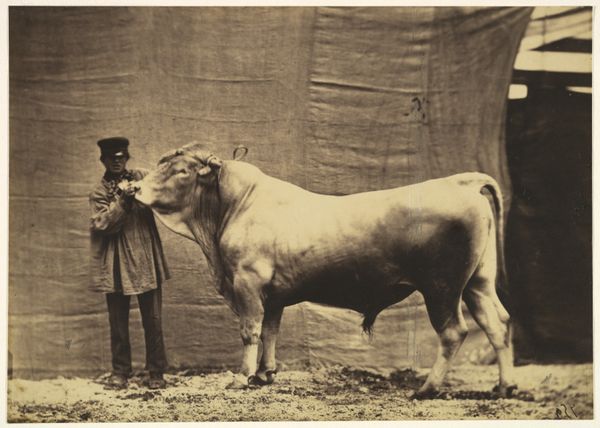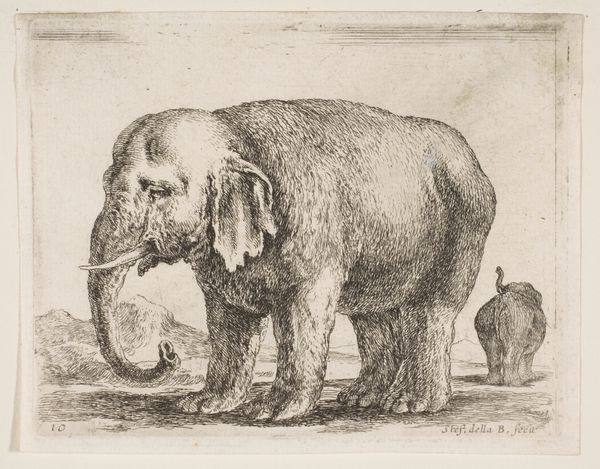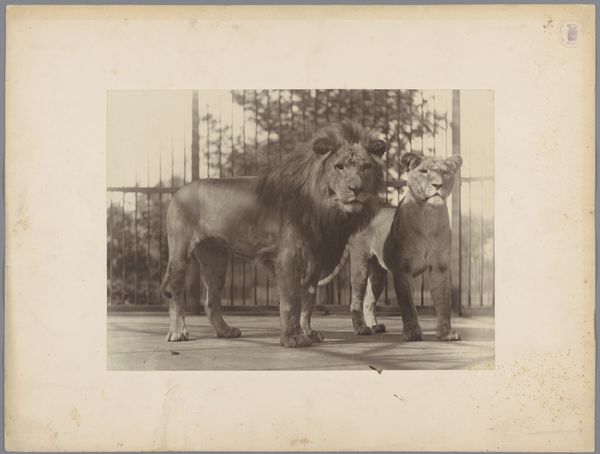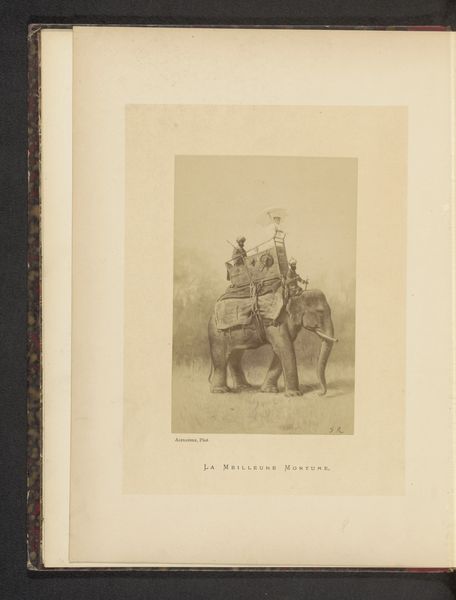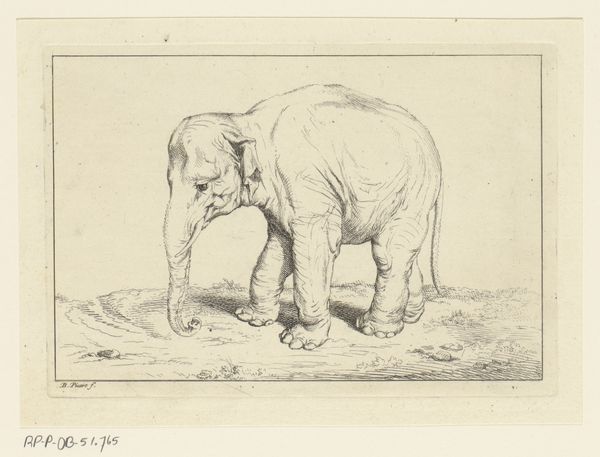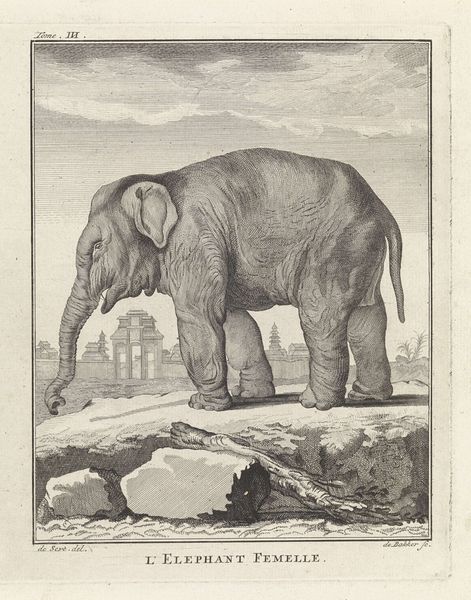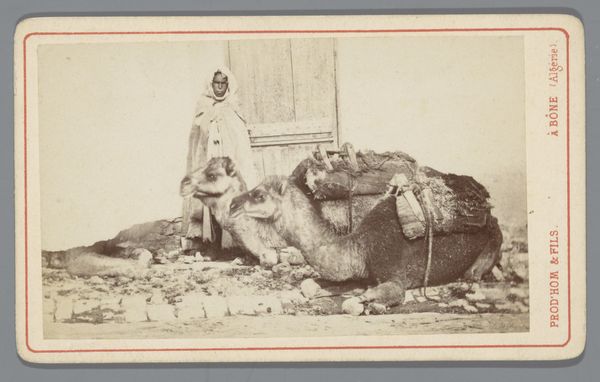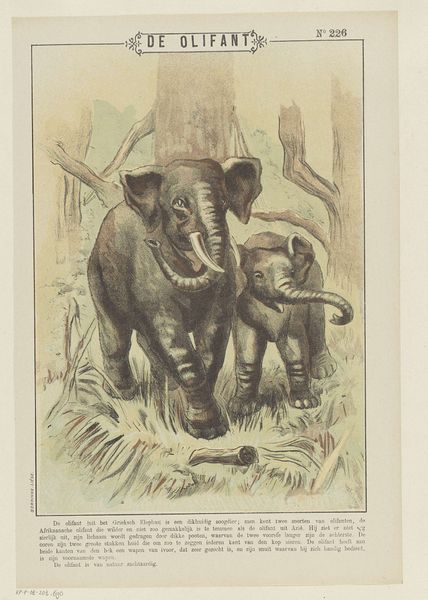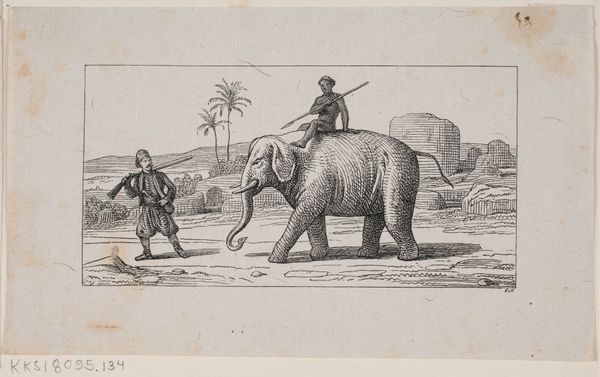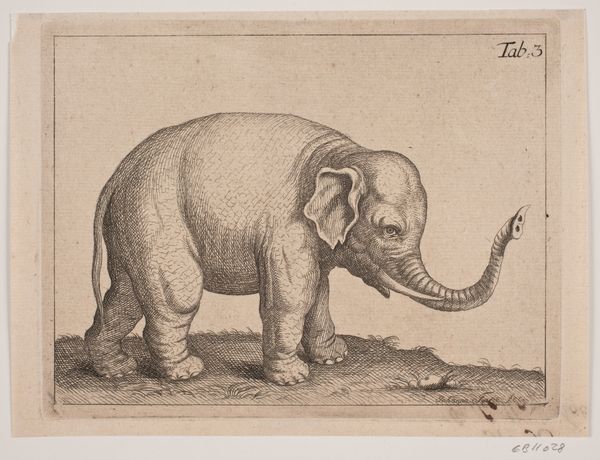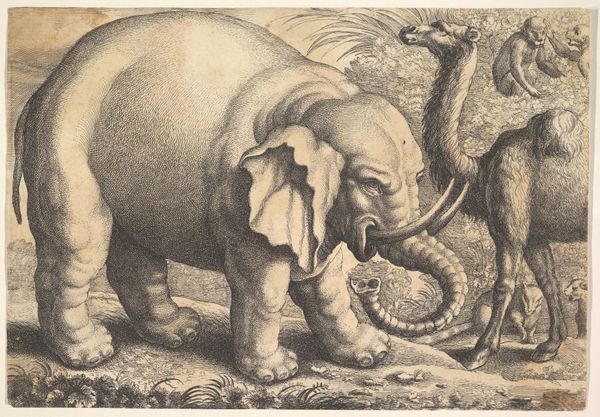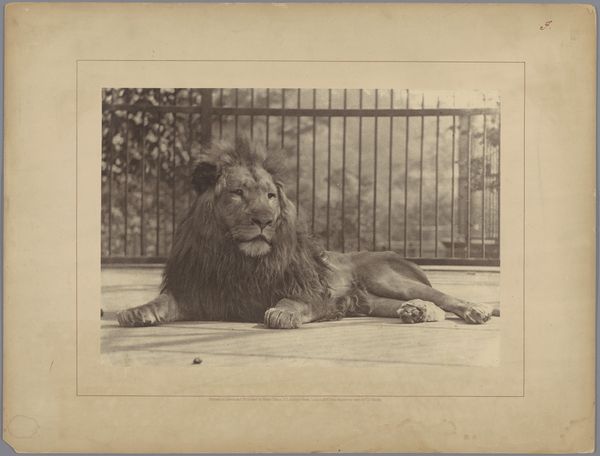
photography, albumen-print
#
portrait
#
african-art
#
landscape
#
photography
#
orientalism
#
albumen-print
Dimensions: Image: 24.1 x 21.2 cm (9 1/2 x 8 3/8 in.) Mount: 30 x 37.7 cm (11 13/16 x 14 13/16 in.)
Copyright: Public Domain
Lala Deen Dayal created this photograph, "The Great Elephant," using the wet collodion process, a popular method in the late 19th century. This technique involved coating a glass plate with chemicals, exposing it in a large format camera, and developing it immediately. The result, as you can see here, is an image with incredible detail and tonal range, capturing the texture of the elephant's skin and the folds of its massive form. But the wet collodion process was labor-intensive and time-sensitive. Photographers like Dayal had to be skilled chemists and craftsmen, working quickly in makeshift darkrooms. This image speaks to the artistry and technical expertise required to produce photographs during this era. Beyond its aesthetic qualities, this photograph also offers insight into colonial India. Dayal, an Indian photographer, gained prominence documenting the lives of both Indian elites and British colonizers, creating a visual record that reflects the complex power dynamics of the time. By understanding the materials, making, and context of this photograph, we can appreciate its significance beyond just a visual representation, challenging traditional distinctions between fine art and craft.
Comments
No comments
Be the first to comment and join the conversation on the ultimate creative platform.
